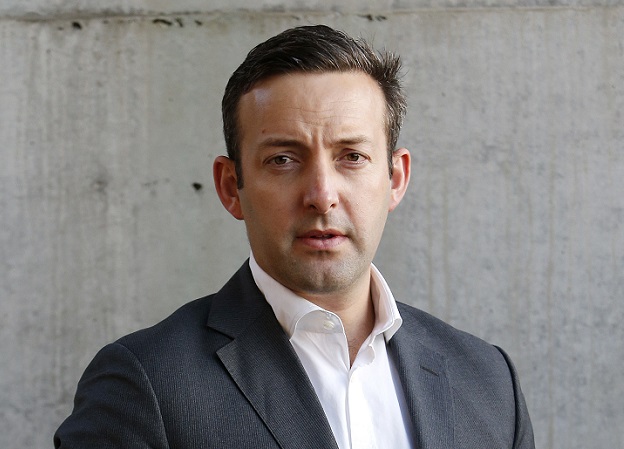
James Brown, CEO of the Space Industry Association of Australia.
Australia is coming late to the space sector in many ways, but the pace is picking up at last.
James Brown is CEO of the Space Industry Association of Australia (SIAA), the peak body representing local companies involved in all aspects of the space sector. He came to the role with a background first as an Army officer, then as a researcher in several public policy think tanks such as the Lowy Institute and the US Studies Centre, working mostly on foreign and defence policy. “It was when I was at Lowy, in about 2014, that I started picking up on all the ‘NewSpace’ stuff and thinking about what that meant for Australia,” he said.
Brown has served in his role as SIAA CEO for about a year, so we caught up with him to learn more about the organisation and its role and where he sees the Australian space sector going.
What’s the government’s attitude to the local space sector?
The challenges are really interesting here and I can already see some successes we’ve had. When I first came into the job and I was talking to people in the federal government, they were saying “Yep, this is all going to be private sector led, private investment, government will kind of just sit back and watch it happen”. That hasn’t happened with any space market in the world, so Australia’s not going to be different. It took a while, but we finally got a different message, saying, “Okay, we get it”. Government has to play a big role here, even if it’s just as lead customer.
Is there an overall plan?
We’re trying to rally everyone around the one kind of plan. I think there’s consensus on the main points, but we haven’t yet got to that point where everyone is like, “This is THE PLAN for space investment for the next ten years”. At the moment, the sector’s in a state of flux.
Defence is such a big part of where the space industry in Australia goes as well. They’re going to spend $13 billion in the coming years.
There’s consensus across the industry at the moment that we need a national space strategy. Australia is not going to be able to invest in everything, and we’re going to have to pick some areas of strength. We’re going to have to make sure that we can leverage the amount of defence funding that’s going into the sector to develop civilian industry and refine the technology that’s coming out of our universities. We need to make sure that where government is giving assistance, it is doing so in the right areas. And what we’re seeing at the moment is there is a lot of well-intentioned support but it’s fairly ad hoc — it’s not well coordinated.
We’re coming to space late, but with enthusiasm. We’ve got to make sure that there’s agreement, there’s a strategy between government, industry and universities around where we think Australia’s strengths lie and where the sweet spot is for investment.
What’s top of the list?
I think one of the really interesting discussions in the last 12 months has been the discussion around sovereign launch capability. When I first came into this job, Defence, the Australian Space Agency and others really didn’t have a firm view that Australia required a sovereign launch capability. That’s now changed for a variety of reasons, one of which is that we’ve had experiences where Defence satellites have been bumped from overseas launches; we haven’t been able to get slots on overseas launches. I think there’s a realisation that if Australia is going to invest such an enormous amount in building a space industry, being dependent on another country for access to space seems to be an unacceptable choke point.
So we need the ability to launch satellites from Australia, replenish our satellites if need be. We need the ability to manufacture satellites here to differing levels. I don’t think we’re going to be manufacturing satellites here for GEO in Australia in the next five years, but it’s very achievable that we could have a production line manufacture small-scale satellites up to 500 kg and launch them from Australia. And that would give us the ability to do a lot.
I think the other area we need to have sovereign capability in, and in which there’s unanimous agreement, is space situational awareness. That’s becoming so much more important for Australia.
The technology’s there, there are options on the table, but the government hasn’t committed itself yet to buy from the providers.

©stock.adobe.com/au/inna
Internationally, is Australia seen to be carrying its weight?
I think Australia has always been seen as being influential in space. The first chair of the Committee on the Peaceful Uses of Outer Space was Australian, we’ve been involved in space law, we’re very active in space science, and our researchers are consistently in the top ten in terms of academic citations. So we’re influential, but in terms of our industry, people appreciate that the real capacity is just starting to come online now. We’re seeing a huge amount of interest in Australian space from international partners, more than we can keep up with at the moment.
What value do they see in us?
For a few things. If you want to run a global constellation, you’re thinking about where you want to put your ground station. Australia is desirable for many reasons. And partly it’s driven by the scale of defence spending — people are seeing that and seeing opportunities. But it’s also because we’ve been a reliable partner to the US and Europe, Japan too. It’s very hard for most countries other than the US to do space on their own; they want a partner to collaborate with.
Where would you like to see the sector 10 years from now?
I’d like to see us with a pipeline of graduates coming out of university and TAFE with companies and jobs they can go to. I think that’s the most important thing. And making sure we’ve got that right is a bit of a challenge — there’s going to be a real war for space talent.
I’d like to see Australia having a funded civilian space strategy, and a right architecture within government to make decisions on space. I’d like to see us manufacturing and regularly launching satellites from Australia. And also the other part of this, too, is that our ability to deliver space services is enormous; it’s not all about the hardware.
I’d want to see more of the public understanding what Australia is doing in space. I think that’s one of the big things that needs to happen in the next five years. It’s only two years ago that you’d talk about an Australian space industry and people would giggle. Now that people understand it’s real, the next step is to understand what Australia is actually good at in space — to build champions across government and across other industries who understand both the opportunities but also the risks. I think there are a lot of parts of our economy, a lot of big companies that don’t understand how dependent they are on space-based assets.
What’s on SIAA’s agenda for 2022?
Part of what we’re doing this year is developing our ability to understand Australian space industry. We’re working on a new Australian space industry capability database that will go live later this year. We’re doing that with a range of government and industry partners, and that will be a really important resource — not only for companies in Australia that work with each other, but also for investors and international partners to connect with Australian space.
We’ll be doing a lot more international work this year. Last year we did some work with the British on the UK-Australia Space Bridge. This year we’ll be heavily focused on the US.
Of course, it’s an election year. We’ve got to make sure the major parties have a space policy and we’re working with both of them on that. We want to see that space is properly funded and understood by whoever forms government.
There’s so much more coming down the pipeline that we need to provide an industry perspective for, eg. the Space Agency’s roadmaps, the negotiations on the US-Australian Technology Safeguards Agreement. So what we’re doing is building the architecture for what the Australian space industry looks like for the next ten years. It’s exciting but it’s also very busy!
This article was first published in the Apr/May 2022 issue of Position magazine.
Stay up to date by getting stories like this delivered to your inbox.
Sign up to receive our free weekly Spatial Source newsletter.







